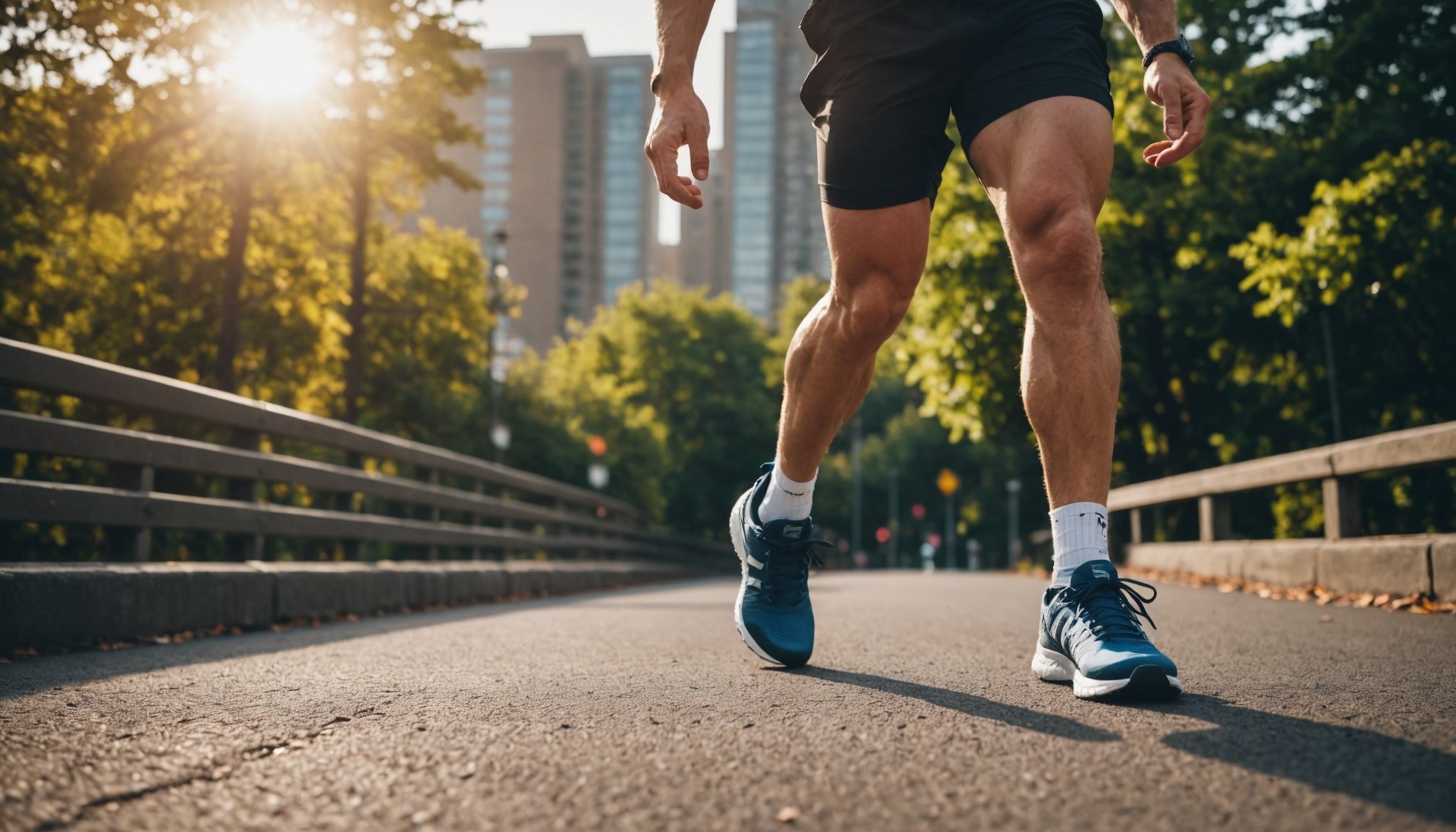Running, a popular form of cardiovascular exercise, can greatly benefit heart health and overall fitness. However, the type of footwear you wear while running can significantly affect not only your performance but also the activation of leg muscles. A study conducted using Google Scholar, Pubmed, and Crossref databases have shown that different footwear types can influence the activation of various lower limb muscles during running.
The Role of Footwear in Running
Before going into the depths of how shoes affect muscle activity, let us first understand the concept of gait and how it is affected by the shoes we wear. Gait refers to the way a person walks or runs. It’s a complex activity involving many muscles and joints. The foot strike, or how your foot hits the ground during running, is a crucial aspect of your gait.
This might interest you : How can psychological stress management techniques improve physical performance in strength athletes?
Footwear can significantly impact your gait, particularly your foot strike pattern. For example, running shoes with thick heel cushioning can promote a heel strike pattern, while minimalist shoes can encourage a forefoot or midfoot strike. Each foot strike pattern engages different muscles of the lower limb, which can ultimately affect your running efficiency and injury risk.
The Impact of Footwear on Muscle Activation
The type of shoes you wear during exercise can have a profound impact on your lower limb muscles. This is because different shoes can modify your foot strike pattern, running mechanics, and consequently, muscle activation.
In parallel : How can electrostimulation therapy be integrated into strength training routines?
Research from Google Scholar and Pubmed reveals that running in minimalist shoes increases muscle activity in the calf muscles (gastrocnemius and soleus) compared to traditional running shoes. This is likely due to the forefoot strike pattern often associated with minimalist footwear, which requires a greater use of calf muscles for propulsion and shock absorption.
Conversely, traditional running shoes with thick heel cushioning can promote a heel strike pattern, which has been associated with increased activation of the quadriceps muscle. This can increase the load on the knee joint, contributing to common running injuries like patellofemoral pain syndrome and IT band syndrome.
How Footwear Impacts Running Efficiency
Having understood how footwear influences muscle activation, it’s essential to consider how this impacts running efficiency. The way your foot strikes the ground, and the muscles involved during this process, play a significant role in energy expenditure during running.
Studies available on Crossref suggest that running in minimalist footwear can improve running efficiency compared to traditional running shoes. This is because a forefoot strike pattern reduces the braking force when your foot hits the ground, leading to less energy being lost. Additionally, the increased activation of calf muscles, which are highly efficient in energy usage, can further enhance running efficiency.
Conversely, a heel strike pattern, commonly associated with traditional running shoes, can increase energy expenditure due to greater braking forces and increased reliance on less efficient muscles such as the quadriceps.
Footwear and Injury Risk
Lastly, the type of running shoes can significantly impact your risk of injury. Contrary to popular belief, running shoes with more cushioning do not necessarily protect against injury better. In fact, they may increase the risk of injury by promoting a heel strike pattern, which has been linked to various running injuries.
On the other hand, minimalist shoes, while they may improve running efficiency and promote a healthier foot strike, might increase the risk of injuries like calf strains and metatarsal stress fractures if not transitioned into properly. This is because these shoes require a greater activation of calf muscles and place more stress on the foot bones compared to normal running shoes.
In sum, the type of footwear you choose to wear during your cardio workouts can have a significant impact on the activation of your lower limb muscles. So, whether you’re a seasoned runner or just starting your fitness journey, it’s essential to choose your footwear wisely based on your running style, comfort, and injury history. Remember, the right pair of shoes can be your best running partner.
The Influence of Footwear on Specific Lower Extremity Muscles During Running
When it comes to physical activity, especially running, the role of lower extremity muscles becomes vitally important. The lower extremity muscles, including but not limited to the vastus medialis, the tibialis anterior, and the medial gastrocnemius, are crucial players in the various stages of running, including the stance phase. Studies accessed from Google Scholar and PubMed have shown that the type of running shoes worn can have notable effects on the activation of these muscles.
For instance, one study using gait trials discovered that running in heeled shoes resulted in significantly more activation of the vastus medialis, a muscle located in the thigh, compared to running in normal shoes. This increased muscle activity may explain why heeled shoes are often associated with a higher risk of knee injuries.
The tibialis anterior, a muscle located in the lower leg, was also found to be more active during running in heeled shoes compared to minimalist shoes, likely due to the increased demand on the muscle to control foot motion and maintain stability on an elevated platform.
In contrast, according to an article on PubMed, minimalist shoes were associated with greater activation of the medial gastrocnemius, part of the calf muscle group. This could be due to the increased reliance on the calf muscles for propulsion and stability when running with a forefoot or midfoot strike pattern, which is commonly promoted by minimalist footwear.
The Role of Footwear in Achilles Tendon Load
An area of significant interest in the study of running footwear is the impact on the Achilles tendon. The Achilles tendon is a band of fibrous tissue that connects the calf muscles to the heel bone. It plays a key role in running, as it allows the foot to push off the ground during the stance phase.
Research on Google Scholar reveals that running in minimalist shoes can significantly increase the load on the Achilles tendon compared to traditional running shoes. This is likely due to the forefoot strike pattern associated with minimalist shoes, which places a greater demand on the calf muscles and, in turn, the Achilles tendon.
In contrast, running shoes with thick heel cushioning can reduce the load on the Achilles tendon by promoting a heel strike pattern. However, as mentioned earlier, this may also increase the activation of less efficient muscles, such as the quadriceps, and potentially increase the risk of knee injuries.
Conclusion
In conclusion, the type of footwear chosen for cardio workouts, particularly running, can have a profound impact on lower extremity muscle activation. Whether it’s the vastus medialis, the tibialis anterior, or the medial gastrocnemius, each muscle’s workload can be influenced by the shoes on your feet. Furthermore, the Achilles tendon’s load during running can also be significantly affected by your choice of footwear.
While minimalist shoes may potentially improve running efficiency and engage lower extremity muscles more effectively, they may also increase the risk of injuries if not transitioned into properly. Conversely, while traditional running shoes may offer more cushioning, they could lead to inefficient muscle usage and a higher risk of knee injuries.
As the research on Google Scholar, PubMed, and Crossref shows, it’s not just about the shoes, but also about how they interact with your unique running style and biomechanics. Hence, when it comes to selecting your running footwear, consider your comfort, running style, and history of injuries. Remember, the right pair of shoes can indeed become your best running partner.






